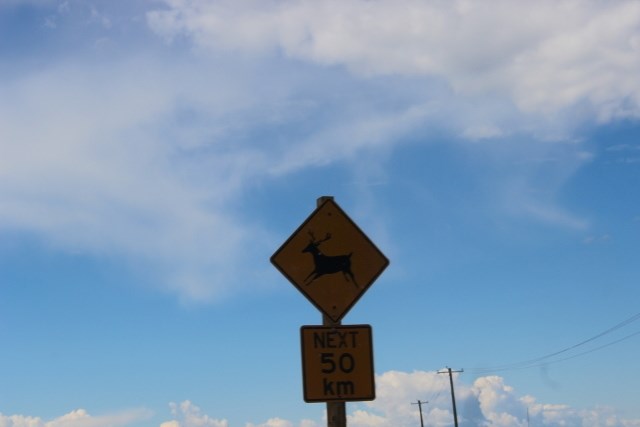The autumn weather can bring colourful sceneries, new outdoor activities and even the tendency of some fury four-legged creatures to jump out in front of vehicles. According to Lac La Biche Brokerlink insurance branch manager, Monear Abougouche the fall season brings on the vast majority of animal impact collisions in the area.
“We are heading into peak season, the fall,” said Abougouche, who has been in the insurance business for 22 years. Animals are on the move.”
Hunting, mating, and preparation for the winter are some of the factors which increase the amount of animals and the animal impact claims through the fall months.
“September to December are the bulk of claims,” said Abougouche.
Driving collision data collected by Desjardin Insurance says that on average, six people die each year in Alberta after a vehicle collision with an animal. A report released by Alberta Transportation in 2014 shows almost half of car crashes that take place on remote country highways involve an animal. In Canada, the most commonly struck animals are deer.
Abougouche explains in Lac La Biche, no highway is worse than others for animal collisions.
“I wouldn’t say any one highway is more prone than others,” he said and added the location claims of animal collisions are spread out evenly among major roads in the area, like Highway 55, 881 and 36.
Melinda Pardy, a driving instructor from Regent Driving School in the Barrhead & Onoway area, a company that is subcontracted through Portage College, for its driving training programs, she recommends her students drive 10 kilometres per hour slower than the speed limit in areas with high deer traffic, especially at night. The driving school teaches on average about 150 students from Lac La Biche per year.
“ At night we do recommend that you drive 10 kilometres slower,” said Pardy.
Abougouche agreed, saying one of the primary factors he sees in animal collision claims is over speeding.
“Unfortunately we live in era where everyone seems to be in a rush,” he said.
If you are going to crash…
For collisions that are unavoidable, Pardy says for smaller animals like deer, it’s better to hit the animal than swerve into other objects.
“I don’t recommend swerving, it is better to hit it (deer) straight on,” she said, explaining because deer are smaller than animals such as, moose, the damage to one’s vehicle can be less severe.
Abougouche explains from an insurance standpoint, colliding with an animal is a “no fault claim”, but a collision with an object, like a post, is an at fault claim.
“Anyone can say, I served to avoid a deer, or animal,” said Abougouche. “You have to prove it with hair, blood – even if the animal survived and ran away.”
For animals such as moose, both driving instructor and insurance broker say avoiding the bigger animal, might mean taking the ditch.
Ensuring safety
The insurance branch manager also adds if a collision does happen, to inspect a vehicle thoroughly for leaks, before beginning to drive again.
“If you do have impact with an animal, don’t drive the vehicle any further – especially if the vehicle is leaking,” said Abougouche.
He adds that driving a vehicle in poor conditions after a crash could result in more damage that might not be covered by insurance.
“Driving a vehicle like that, now you could have a blown the engine and that may not be covered by insurance,” he said.
According to Abougocuhe, it is the driver’s responsibility to check a vehicle after an impact with animal to make sure it’s safe and to report the incident to police to prevent any accusations of hit and runs when the vehicle is taken to a repair shop.


